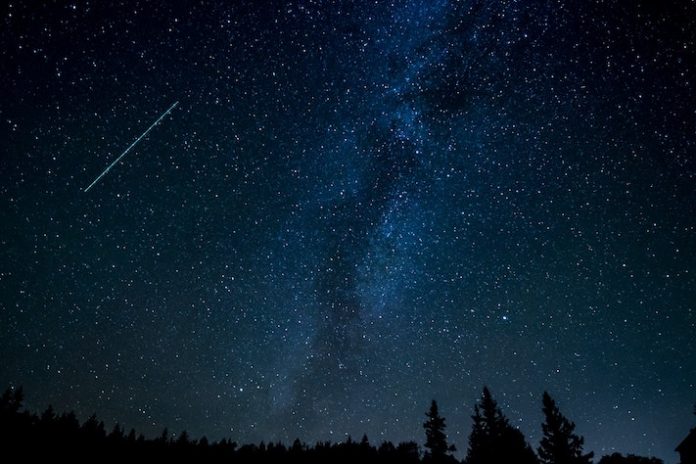Halley’s comet Meteor Shower Will Light Up the Sky With Shooting Stars This October
If you missed a beautiful night spent in nature to see the stargazing, you’re in luck. The Halley’s comet Meteor Shower puts on a spectacular display each October. At its peak, which typically occurs between Oct. 20 and 24, you can see around 15 shooting stars per hour, though up to 70 per hour have been recorded during particularly robust years. While some meteor showers are more prolific — August’s Perseids event, for instance, regularly dazzles with about 60 shooting stars per hour — the Orionids’ shooting stars have a special quality. Though they’re incredibly fast, zipping through the atmosphere at 41 miles per second, they often leave behind a trail that lingers in the sky for a few seconds or even up to a minute.
What is the Orionid meteor shower?
The Orionid meteor shower happens as we pass through the trail of Halley’s Comet. As bits of dust and debris from the famous celestial object enter our atmosphere, they become meteorites, leaving a blazing trail for stargazers to see. It is named the Orionid meteor shower for the point in the sky that it originates from — a spot near the constellation Orion.
When is the Orionid meteor shower?
The meteor shower usually occurs from Oct. 2 through Nov. 7, with a peak between Oct. 20 and 24. In 2020, the peak will occur after midnight on Oct. 21, though you’ll still see plenty of meteors the evening before and after. And this year, viewers are in luck — the moon will be in its waxing crescent phase during the peak, which means moonlight won’t drown out the meteors. On top of that, the moon will actually set in the evening, so the skies will be as dark as possible for ideal viewing.
How can I see the Orionid meteor shower?
For starters, you’ll want to position yourself as far away from light pollution as possible. Sit outside for at least 20 minutes so that your eyes can adjust, then look up at the sky toward the Betelgeuse star in the Orion constellation. (In the Northern Hemisphere, it’ll be in the southeastern sky, and in the Southern Hemisphere, it’ll be in the northeastern sky.) The best time to see the meteors will be just before dawn, but any time between midnight and dawn will do. And if you can’t find Orion, don’t worry — you can usually see meteors all across the sky.
When is the next meteor shower?
Following the Orionids, the next major meteor shower is the Leonids, which will peak between the evening of Nov. 16 and morning of Nov. 17.

